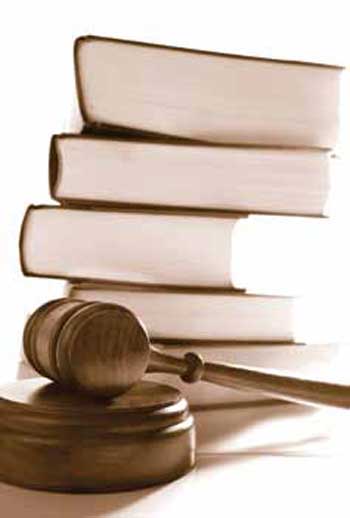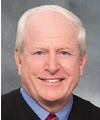November 2015 • Volume 103 • Number 11 • Page 48
Thank you for viewing this Illinois Bar Journal article. Please join the ISBA to access all of our IBJ articles and archives.
The Judge's Corner
Judging Forensic Science
Lawyers and judges have been slow to acknowledge the limitations of forensic science (ballistics, hair comparison, etc.), which has given expert forensics testimony more persuasive power than it deserves.
 Judge Justice had just returned from an Advanced Judicial Academy on "Science and the Courts." His legal career had witnessed the growing impact of science in the courtroom, especially in criminal cases.
Judge Justice had just returned from an Advanced Judicial Academy on "Science and the Courts." His legal career had witnessed the growing impact of science in the courtroom, especially in criminal cases.
In the 1970s, so-called "forensic sciences" included ballistics, handwriting and fingerprint analysis, hair comparison, blood typing, footprint and arson analysis, voiceprint identification, and bite-mark analysis. Experts testified to their conclusion on "matches" between various exhibits, tying the suspect to various locations or criminal instruments. An aura of scientific reliability surrounding that testimony impressed juries and comforted judges as they searched for truth.
The 1980s brought DNA evidence and it revolutionized the use of science in the courts. It also underscored the lack of "science" in many of the so-called forensic sciences. DNA exonerations exposed that many wrongful convictions had relied on other types of forensic testimony.
Growing concerns over forensic science led to a review by the National Academy of Sciences ("NAS"). The Academy issued a report ("NAS report") in 2009 entitled "Strengthening Forensic Science in the United States: A Path Forward" (http://www.ncjrs.gov/pdffiles1/nij/grants/228091.pdf).
The NAS report criticized the absence of validation for virtually all forensic methodology except for DNA, noting that "forensic science professionals have yet to establish either the validity of their approach or the accuracy of their conclusions." Its 13 recommendations call for increased funding in research, training, and standards.
The report criticizes lawyers and judges for relying on forensic evidence "without fully understanding and addressing the limitations of the different forensic science disciplines." It found that "courts have been utterly ineffective in addressing this problem."
Although their progress has been slow, some of the NAS recommendations have been implemented. For example, Iowa State University has been selected to house a new Forensic Science Center of Excellence, where researchers will work "to create a 'solid foundation' for forensic sciences and improve the way forensic evidence is used in the criminal justice system." This will include increased training for lawyers and judges.
The persistence of forensic evidence
Many insist that forensic procedures other than DNA can continue to provide helpful trial evidence despite the questions of validity and accuracy. With any forensic expert analysis, there always is the possibility of human error, contamination, bias, deficient peer review, or even fraud.
While efforts are underway to establish the validity and limitations of forensic testing, what are lawyers and judges to do with this evidence? Courts have relied on forensic expert testimony for years, and well-established precedent supports admissibility.
Regardless of what legal standard is applied (e.g., Illinois is a Frye state, Donaldson v. Central Illinois Public Service Co., 199 Ill. 2d 63 (2002)), courts have found ways to admit forensic evidence even after the NAS report. Illinois Rule of Evidence (IRE) 702 controls testimony by experts, including opinions based on novel scientific methodology. Trial judges are bound by the determination of Illinois Supreme and Appellate Court decisions on Frye issues.
Reliance on precedent remains strong though scientific validity is weak. The Illinois Supreme Court has approved de novo appellate review of Frye determinations and use of extrinsic sources (other court opinions, peer review articles, etc.) as authority. In re Commitment of Simons, 213 Ill. 2d 523 (2004).
Trial courts' responses to questions about scientific reliability have been measured at best. Most continue to admit it and leave it to the adversary process to contain its impact. But since the NAS report, defense attorneys have been more active in cross-examining on the lack of scientific methods and limits on conclusions reached by forensic witnesses.
Courts have allowed pre-trial motions limiting such testimony. For example, some have limited expert testimony to describing points of comparison rather than declaring a "match." Others have barred the use of the term "reasonable degree of scientific certainty" and treated the expert testimony more like technical or specialized knowledge under IRE 702. See People v. Robinson, 2013 IL App (1st) 102476. Other courts have suggested that jury instructions could caution jurors about conclusions reached by experts. Commentators have even suggested excluding some forensic evidence under an IRE 403 analysis (unfair prejudice, confusion of the issues, or misleading the jury).
The limits of expert testimony: People v. Jones
A recent example of this conflict is People v. Jones, 2015 IL App (1st) 121016. The defendant was convicted of murder based on circumstantial evidence and the expert testimony of a firearm/toolmark examiner.
The examiner identified a bullet as having been fired from the defendant's gun. Defense counsel had filed a motion seeking to bar "misleading opinion statements by the prosecution concerning firearms identification." The state agreed to limitations on the testimony, including not using phrases like "to a reasonable degree of scientific certainty." The witness would only state that his testimony was an "opinion."
At trial the witness testified about the basics of firearm identification and what he looks for in making a comparison. He testified that he does not use a national standard but that his subjective exam is based on training and experience. The defense objected based on lack of foundation and was overruled. On appeal, the defense argued that it was reversible error to admit the firearm identification.
The court's analysis reveals the judicial dilemma of admitting such testimony as "scientific" following the NAS report. Three steps are involved in admitting expert testimony: 1) the witness must be qualified as an expert; 2) if the opinion is based on scientific evidence, the party seeking to admit it must lay a foundation consistent with Frye for the scientific principle or methodology used by the expert (Frye only applies to novel scientific methodologies); and 3) the testimony itself, like all expert testimony, must have an adequate foundation.
In Jones, the appellate court found that the witness's qualifications were not in question. As for the Frye challenge, the defense relied upon the NAS report, which found that firearm/tool mark identification was "a subjective decision based on unarticulated standards and no statistical foundation for estimation of error rates."
The appellate court found that there is nothing novel about firearm identification, a methodology that has long been recognized in Illinois. The court noted that "to argue that forensic evidence must have the certainty of a laboratory test or computer analysis and results that are independent of any human interpretation such as DNA evidence in order to be admissible as 'scientific' would wipe out the majority of forensic evidence except for DNA and perhaps tests for blood typing and tests for the presence or absence of gun powder residue.
"[T]hese human expert interpretations are highly probative and aid triers of fact and police in not only convicting but also excluding suspects as perpetrators of crimes" and have long been upheld as admissible, the court wrote.
But though the testimony passed the first two tests, the appellate court found a lack of foundation to admit the testimony because the expert did not provide the information on which he based his opinion. (The court cited People v. Safford, 392 Ill. App. 3d 212 (1st Dist. 2009), but compare People v. Rivers, 2014 IL App (1st) 112549-U.)
Admitting flawed forensic evidence can cause disrespect for the criminal justice system. The Justice Department and FBI recently acknowledged that for decades FBI forensic examiners overstated testimony about hair matches (the FBI now uses DNA rather than visual matches). That led to a review of thousands of cases, some of which involved convictions where the defendants were executed.
Forensic science can be helpful to courts but must stay within the limits of scientific methods and validity. Unfortunately, it appears that scientists will have to help make that happen. Judges and lawyers have not excelled at judging science.

Ronald D. Spears of Taylorville is a judge of the Illinois Fourth Judicial Circuit and past president of the Illinois Judges Association.

